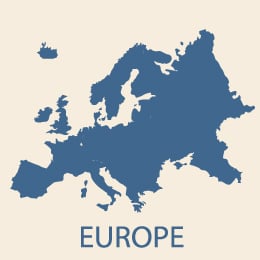 Greetings from Norway!
Greetings from Norway!
After a great three days in Oslo, we’re on the train stopped at Ål on our way to Flåm, up in the fjord country. Based on my time here so far, Norway is a wonderful place: the people are nice, the scenery spectacular, and the weather terrific (at least this time of year).
Great public transit, high taxes
The stellar public transit system points to a key difference between Norway and the U.S.—the role of government.Taxes are extremely high, as are prices, with a value-added tax included in everything. (Restaurant food is actually taxed at a significantly higher rate than takeout food, so guidebooks recommend buying food and enjoying a picnic in one of the many parks.)
It’s not immediately apparent that Norway is an unapologetically socialist country (at least from a U.S. standpoint), but there are subtle clues. In an open-air museum that reminded me of Old Sturbridge Village in Massachusetts, the banking system is described as serving the common people—a far cry from how Americans view banks today. Guidebooks and histories emphasize the role of regular citizens and the working class.
What makes Norway tick?
From a U.S. perspective, you might expect a society in trouble, especially given the challenges elsewhere in Europe. On the surface, though, Norway—at least the bits of it I’ve seen—works.
- Oil is a big part of that. Over the past several decades, Norwegian oil production has paid for much of the welfare state.
- Staying out of the European Union may be another factor. Norway has avoided EU regulations and maintained control of its own economy.
- Clean, effective government probably accounts for much of the rest: if you have to have a big government, it sure helps if it’s competent. And, if public transit here is any indication, Norway’s government is.
Judging by the cafes (and prices!) of Oslo, Norway continues to do quite well—better, certainly, than countries further south. Overall, economic stress is much less apparent here than it was during my trips to Amsterdam and Dublin in 2013, and I don’t think it’s just the passage of another year.
Will the U.S. oil boom have similar results?
Looking at Norway, hopes for widespread benefits from the growing U.S. oil sector are far from pipe dreams. Our current oil boom may well boost the entire economy, as it seems to have done here. And, if politically desirable, that wealth could pay for higher levels of spending (or for substantial deficit reduction).
A note on U.S. employment
Friday’s jobs report came in above 200K, as I had expected. Some commentators are disappointed that it wasn’t higher, and I agree that more would have been better. But as I said last week, a slow and steady pace, with gradual acceleration, is indeed returning us to normal. The recovery continues.


 Print
Print

